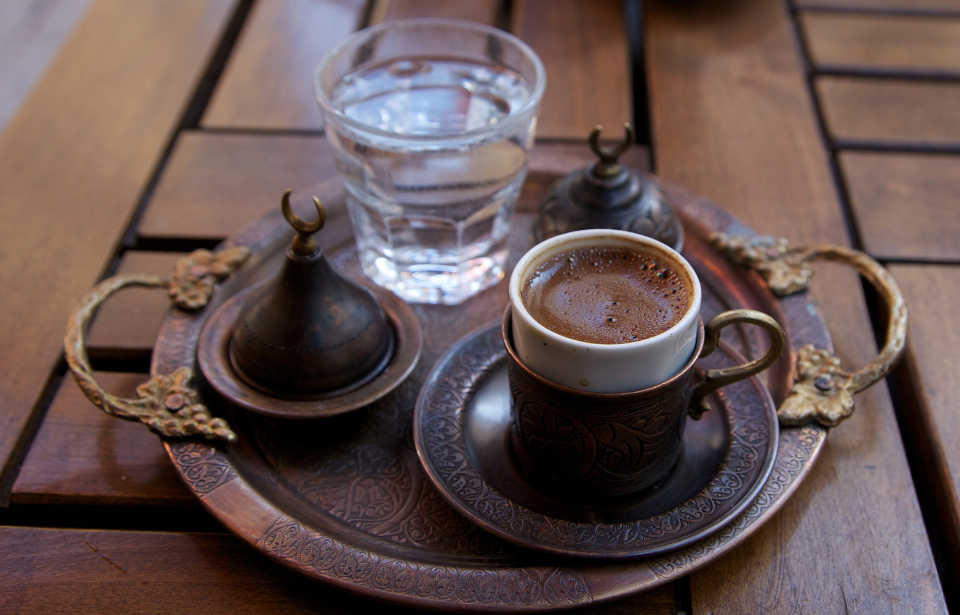“A cup of coffee” can be more than a beverage–it’s a lifeline for some. Many people claim that they can’t wake up without their morning cup of coffee, while others say that they can’t stop drinking it because caffeine is what keeps them creative. And the list of those people is anything but short, containing the names of Honore de Balzac, who drank 50 cups of coffee each day, and Beethoven, who drank his brew made with exactly 60 coffee beans. Not a bean less, nor a single one more.
It is not really known where the history of coffee begins but there is a world-famous legend about Kaldi, a herdsman from Ethiopia who was the first to discover the effects of coffee beans. According to the legend, around the year 850 AD Kaldi noticed that whenever his sheep ate the red berries that grew on a particular bush, they became excited and more energetic, to the point that they didn’t sleep at night.
One day the herdsman decided to try the red berries himself–and felt the same effects. He then brought the berries to a local monastery, where the monks were convinced that Kaldi had discovered a most unusual fruit.

Soon, word of the energizing berries spread and caught the interest of the Galla tribe in Ethiopia. They invented a kind of a power bar that was prepared with clarified butter and the berry. It was the food of the warriors and it apparently made them invincible. Energizing bars based on coffee berries are still a common snack in parts of Ethiopia.

However, the first written sources about coffee date from 1000 AD, when the medical purposes of beans are described by the Persian polymath Avicenna. It took 100 years for Arab traders to transport the coffee from Ethiopia to present-day Yemen, where they started cultivating the plant. It appears that the first coffee plantations were created in Yemen, and it was the Arabs who invented the hot black beverage made from the red berry. It was called “qahwa,” which meant “that which prevents sleep.”

Another legend originates in the 15th century, when Sheik Gemaleddin Abou Muhammad Bensaid, the Mufti of Aden, visited Ethiopia. At the time he was feeling ill, and a cup of a drink made of coffee beans made him better. He brought the drink, the berries, and the seeds back home to Yemen, where drinking coffee became a custom in the shortest period of time. Everyone loved it, especially those who wanted to stay awake to work or study.
By the late 15th century coffee had become a common beverage in the Near East, but the Ottoman Turks had mastered the art of it. They prepared the coffee with cinnamon, anise, cardamom, and cloves. And this spicy version is still available in some places in Turkey. It is no wonder that they drink coffee after coffee when they prepare each cup with so much love and attention.
Coffee shops were opened all around Constantinople and functioned as the center of people’s gatherings, political debates, discussions, and critical thoughts. All around were cups of coffee. It became so deeply incorporated into Turkish culture that a law was allegedly created that gave any woman the freedom to divorce her husband if he didn’t provide her with the necessary amount of coffee. This might be a bit of an exaggeration but anyone who loves coffee can probably understand!

For a brief period in the early 16th century, coffee was banned. The Governor of Mecca, Khayr Bey, feared that the lively discussions that took place in the coffee shops all around, every day, might decrease the power of his word and enforce the critical thoughts of people who…drank coffee together. So he shut down all coffee shops. And there might have been a coffee revolution if the Sultan of Cairo had not intervened, defending coffee as sacred to his people and their culture.
Coffee culture spread around Europe with the spread of the Ottoman Empire. What is known as Turkish coffee is still present in the Balkans, while in Europe the art of coffee flourished, leading to those other dimensions known today as espresso, macchiato, cappuccino, etc. However, when coffee was introduced in Venice by the Turkish traders, it was denounced as the “bitter invention of Satan” by the Venetian clergy, who tried to ban it again. But Pope Clement VIII reportedly could not resist the obscure charms of the drink.
More from us: The Surprising And Controversial Origin Stories Behind Some Common Favorite Foods
There have been attempts to ban the drinking of coffee that proved fruitless. In the end, everyone loved coffee, from Kaldi’s sheep to the Pope. Today, coffee is the fourth most consumed beverage in the world, ranking after water, milk, and tea.
